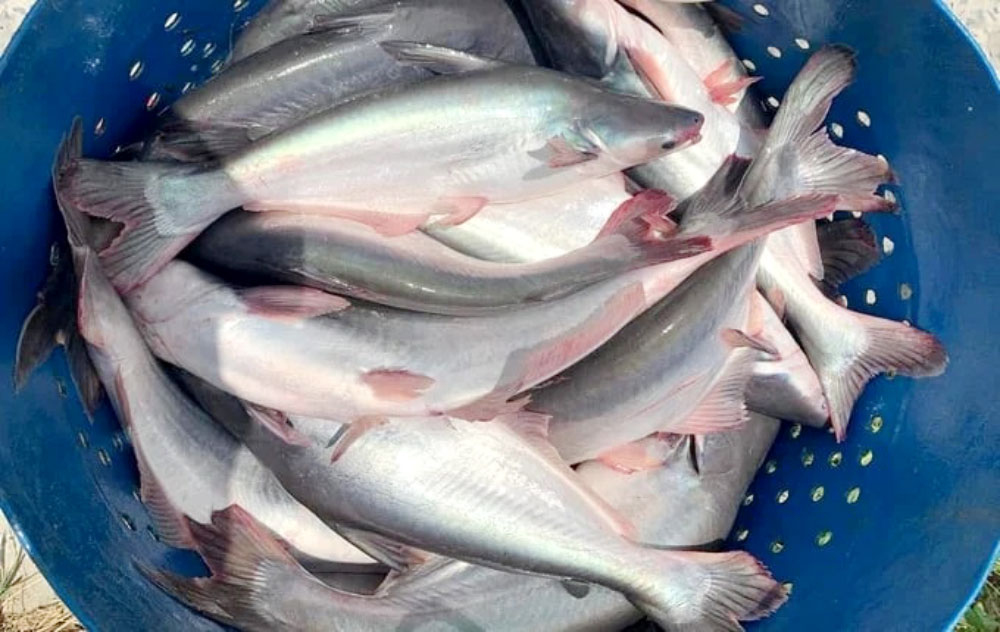Vietnam Seafood
Telling the story of Vietnamese pangasius to be proactive in the market
Pangasius exports have repeatedly faced defamatory media from competitors. Therefore, there needs to be a proactive communication strategy for Vietnamese pangasius.
More than anything, the pangasius industry is the industry that is most aware of how being defamed by the media has affected exports.
The EU used to be the largest market for Vietnamese pangasius. In 2008, pangasius exports to the EU reached the highest turnover in history at USD 580 million, accounting for about half of seafood export turnover to this market.
At that time, Vietnamese pangasius, with its advantage of low prices, became the main competitor to native whitefish in the EU. In the later years, Vietnamese pangasius was repeatedly defamed by a number of media agencies in Europe. This is one of the reasons why pangasius exports to the EU have continuously decreased since 2009. By 2017, pangasius exports to the EU were only at USD 200 million.
In 2018, amid the strong growth momentum of pangasius exports in general (for the first time exceeding the mark of USD 2 billion), pangasius exports to the EU recovered and reached USD 250 million. But in 2019, pangasius exports to the EU decreased. However, this decrease is part of the general decline in pangasius exports to markets.
Since then, due to many reasons such as the COVID-19 pandemic, the Russia-Ukraine conflict, the global economic crisis, etc., pangasius exports to the EU have often been in an unstable state, sometimes increasing and sometimes decreasing. However, the EU is still assessed by pangasius businesses as a market that needs attention because the consumption demand for whitefish here is very large.
To conquer the EU market and other important and potential markets, in addition to focusing on value-added pangasius products and ensuring green standards, communication and marketing activities also need to continue to be paid attention to and promoted.

A basic communication strategy for Vietnam’s pangasius industry has been developed. Ms. Nguyen Ngo Vi Tam, General Director of Vinh Hoan Joint Stock Company, shared that there are 2 steps of communication strategy for Vietnam’s pangasius industry. The immediate goal is to arrange, clean up, and prepare for negative situations that may arise. The next step is proactive communication, telling the story of Vietnam’s pangasius industry.
Arranging, cleaning up, and preparing for negative situations that may arise will increase the proactive ability for the pangasius industry and businesses to solve problems thoroughly instead of being passive and struggling to find solutions when an unexpected situation occurs related to the image of Vietnamese pangasius as it has been for a long time.
It is very important to implement proactive communication, telling the story of Vietnam’s pangasius industry to domestic and international media. This aims to build a positive image for Vietnamese pangasius. Thereby, expanding the market, creating trust, protecting reputation and brand, and creating additional value for the pangasius industry’s products.
According to Ms. Vi Tam, communication in the pangasius industry needs to unify the message, locate a standard sheet of questions and answers, issue notices, and build scenarios of situations possibly occurring. In particular, it is necessary to train the team working on communications about pangasius and build key relationships with parties and target media audiences. At the same time, businesses also need to create a database with complete evidence to serve for handling problems that may occur.
From there, the communication will gradually improve the image of Vietnamese pangasius in the long term, helping to build standards and models in pangasius production and business that VASEP members need to aim for. Telling a positive story that reflects the truth and inspires about the pangasius industry with specific examples will gradually form relationships with media parties supporting the industry.
In the first 6 months of this year, pangasius exports reached USD 918 million, up 5% over the same period in 2023. Of which, pangasius fillets are the largest export product when reaching USD 739 million, up 3%. Fresh/frozen/dried pangasius reached USD 162 million, an increase of 17%. China-Hong Kong is the largest market of Vietnamese pangasius in the past 6 months with a turnover of USD 258 million, down 8% over the same period in 2023. Next is the US market reaching USD 160 million, up 14%; CPTPP reached USD 128 million, up 11%.
(Source: https://vietnamagriculture.nongnghiep.vn/)



 Tiếng Việt
Tiếng Việt